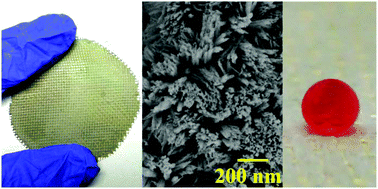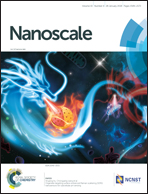A superhydrophilic cement-coated mesh: an acid, alkali, and organic reagent-free material for oil/water separation†
Abstract
Extreme wettability materials applied for oil/water separation have become a research focus in modern society, owing to the large amounts of oil-containing industrial wastewater emissions and the frequent occurrence of oil spills. However, most of the methods to fabricate the extreme wettability materials involve toxic chemical reagents, complex chemical reaction processes, and dangerous operation processes. A new acid, alkali, and organic reagent-free cement-coated mesh was presented for the sustained separation of oil and water from oil/water mixtures. The meshes were fabricated by dipping porous Cu meshes in the cement paste. The micro/nanostructures and hydroxyl groups of the cement enable the meshes to be superhydrophilic in air and superoleophobic under water. The separation efficiencies for oils with a wide range of kinematic viscosities (0.42–74.4 cSt at 40 °C) were all above 94%. The superhydrophilic cement-coated meshes could separate the oil/water mixture containing hot water, salt, and alkali for at least 30 cycles. The superoleophobicity of the cement-coated meshes was intact under seawater for at least 120 hours, showing good durability and stability. This green fabrication method is easy, cost-effective and environment-friendly.



 Please wait while we load your content...
Please wait while we load your content...